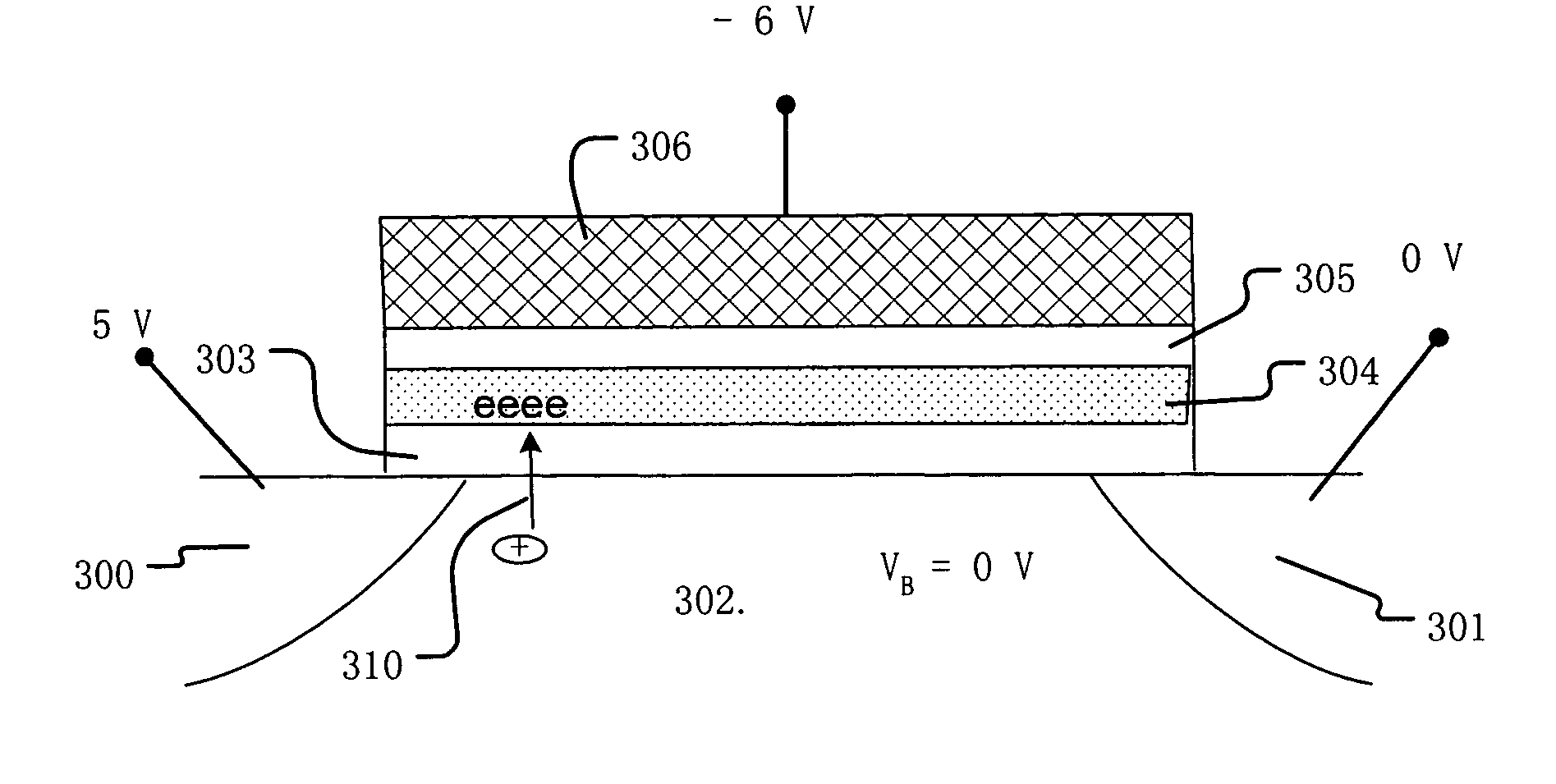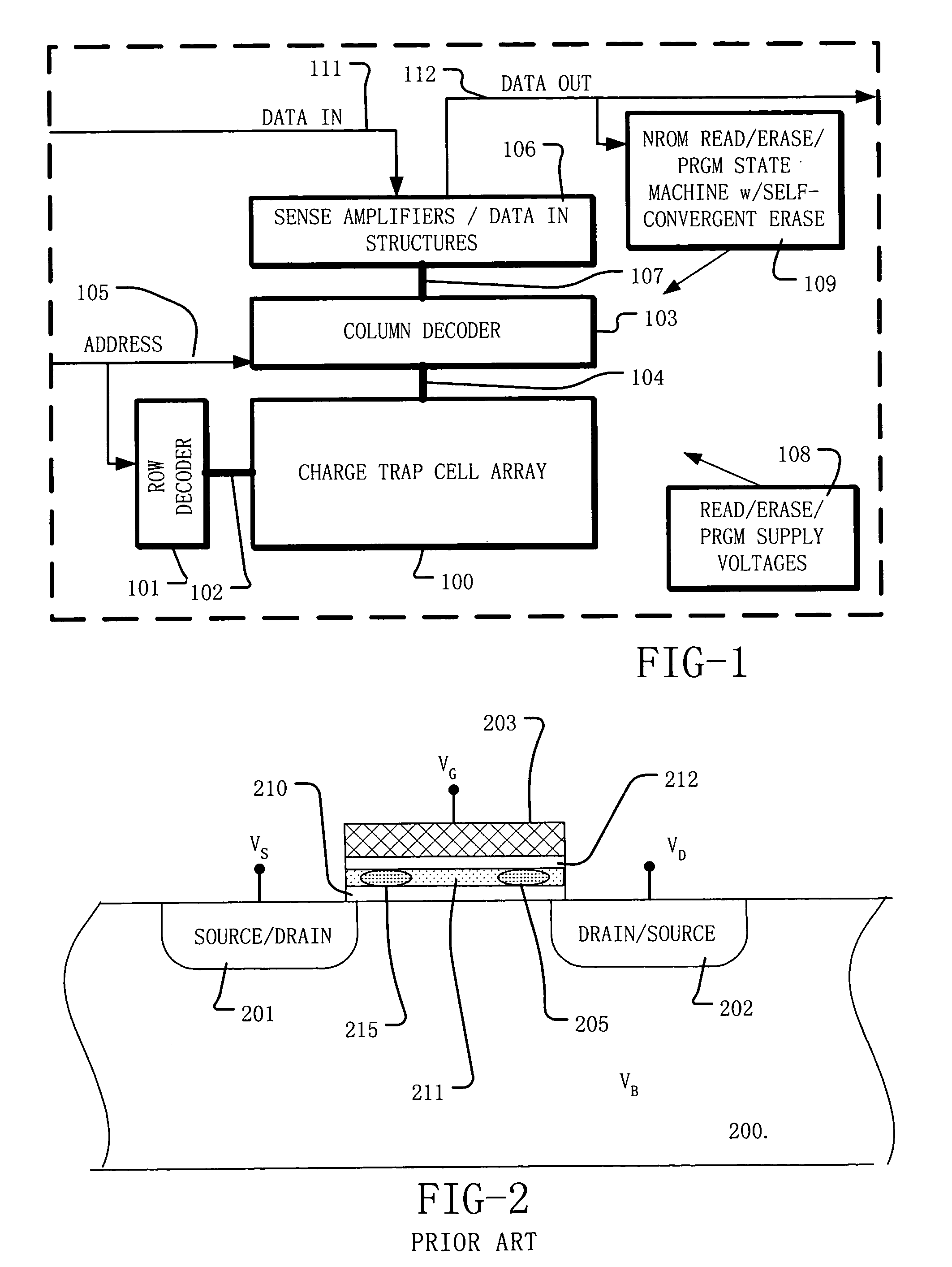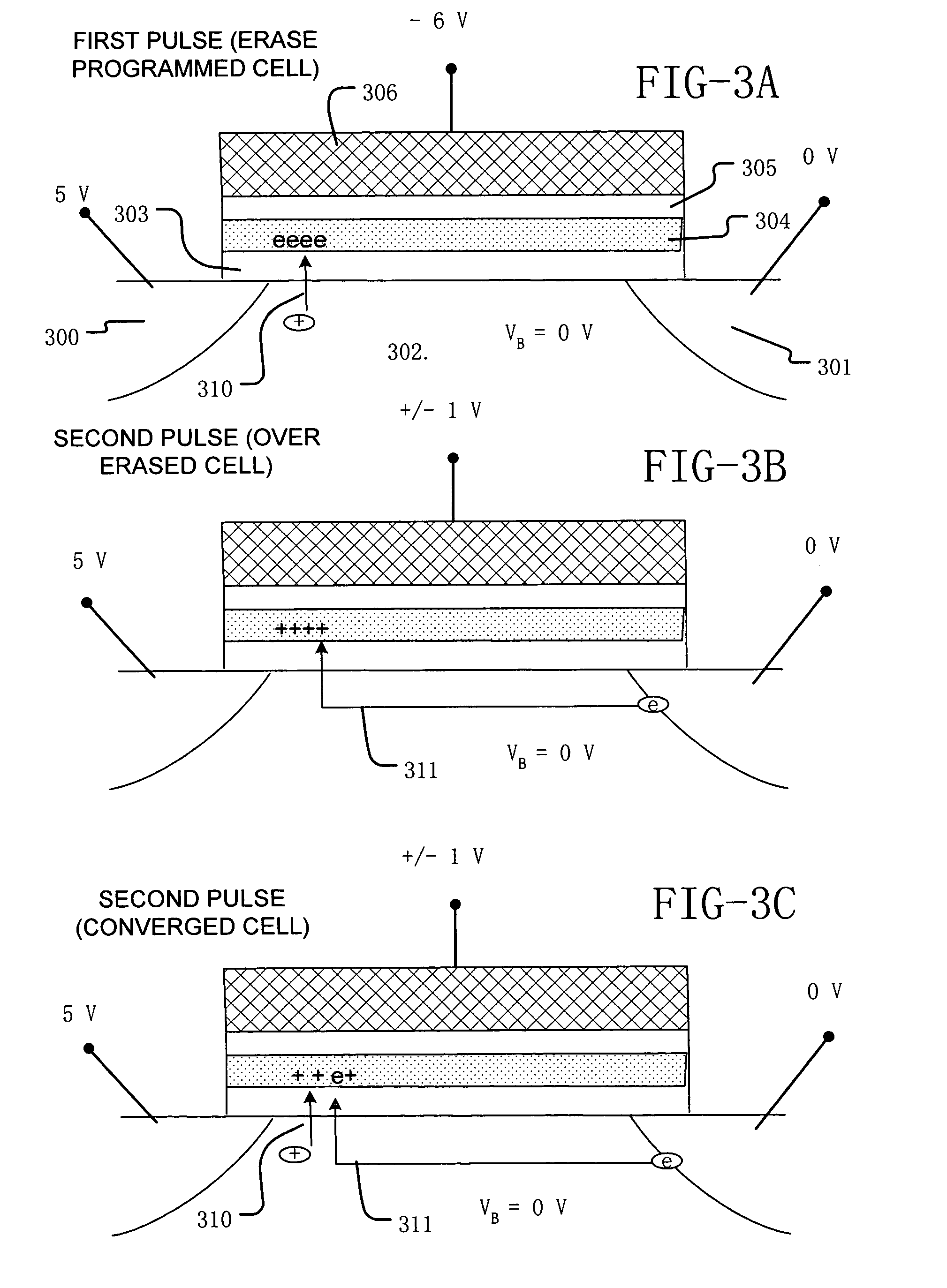Method and system for self-convergent erase in charge trapping memory cells
a technology of charge trapping memory cells and self-convergent erase, which is applied in the direction of digital storage, instruments, semiconductor devices, etc., can solve the problems of cell over-erase, and achieve the effects of reducing negative charge, negative charge, and over-erase condition
- Summary
- Abstract
- Description
- Claims
- Application Information
AI Technical Summary
Benefits of technology
Problems solved by technology
Method used
Image
Examples
Embodiment Construction
[0027] A detailed description of embodiments of the present invention is provided with reference to FIGS. 1-11.
[0028]FIG. 1 is a simplified block diagram of an integrated circuit supporting self-convergent erase according to the present invention. The integrated circuit includes a memory array 100 implemented using NROM memory cells, or other charge trapping memory cells. A page / row decoder 101 is coupled to a plurality of word lines 102 arranged along rows in the memory array 100. A column decoder 103 is coupled to a plurality of bit lines 104 arranged along columns in the memory array 100. Addresses are supplied on bus 105 to column decoder 103 and page / row decoder 101. Sense amplifiers and data-in structures in block 106 are coupled to the column decoder 103 via data bus 107. Data is supplied via the data-in line 111 from input / output ports on the integrated circuit to the data-in structures in block 106. Data is supplied via the data-out line 112 from the sense amplifiers in bl...
PUM
 Login to View More
Login to View More Abstract
Description
Claims
Application Information
 Login to View More
Login to View More - R&D
- Intellectual Property
- Life Sciences
- Materials
- Tech Scout
- Unparalleled Data Quality
- Higher Quality Content
- 60% Fewer Hallucinations
Browse by: Latest US Patents, China's latest patents, Technical Efficacy Thesaurus, Application Domain, Technology Topic, Popular Technical Reports.
© 2025 PatSnap. All rights reserved.Legal|Privacy policy|Modern Slavery Act Transparency Statement|Sitemap|About US| Contact US: help@patsnap.com



